There’s no doubt that crochet is super popular right now and has earned its rightful place on the fashion mantle. You can find crochet pieces everywhere on Instagram, TikTok, stores & online shops: from crochet bucket hats, bags, tops & more.

You can even find your favorite celebrities wearing handmade crochet items, such as Olympic swimmer Tom Daley, who became my favorite man, crochets as a hobby and shows it off online. I’m sure you caught Rihanna & Bella Hadid sporting last summer’s favorite accessory, the crochet bucket hat.
Unfortunately, big-name designers have also picked up on this trend, featuring crochet designs in their collections. Last year, Harry Styles’ rainbow patchwork JW Anderson cardigan, went viral after his appearance on the Today show.
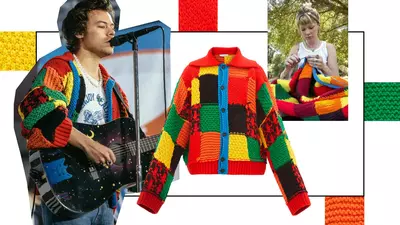
Most of us can’t afford Mr. Styles’s $1,500 sweater. And that’s exactly how it sparked a DIY craze, and fans across the world decided to reproduce Harry’s style.
But so did Fast fashion!
In this article, we will discuss crochet manufacturers, fast fashion theft, & modern-day slavery in the fashion industry.
Watch the video instead
Theft from small designers
Indie designers — most of whom are black — have been repeatedly calling out the brand for allegedly intentionally selling knockoffs of their designs. They also claim the brand has dismissed them when they’ve reached out, sometimes blocking them on social media altogether.
Black designers often feel frustrated with the lack of support from the media and lack of opportunities in the industry. With their designs being stolen left and right, black designers are not given a chance to grow and create new and innovative designs.
Designers like Duro Olowu, have been vocal about their frustration with these blatant copies. “The fashion industry is a minefield for any designer who is not white or European” (Westwood). Consequently, many African-American designers such as Duro Olowu feel like they are running out of creative opportunities due to the theft of their work.
Luci Wilden of knots & Vibes, is a crochet artist, was shocked to discover Fashion Nova selling its own version of her dress that was exactly the same — down to the “number of rows in the stripes.”
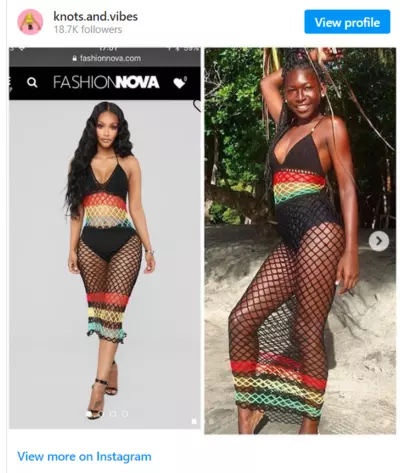
This is what Wilden had to say about the situation;
I’m so mad! Fashion Nova has ripped off my ‘Skin Out’ dress DETAIL FOR DETAIL! I designed the green version of this in 2016 & this color in 2017. They’ve mass-produced this with a retail price of $40!! That makes their production price aroun $13, meanin whoever crocheted this was paid less than $1 per hour. Not only are they stealing my design, but they’re using it to exploit people and profit from it. They know we small-time designers can’t afford to take legal action.
I went over the Fashion Nova website & typed in crochet to see what they had available. They had 151 crochet pieces, with nothing over $54! Some of these are full outfits!! That lead me to research, who & how are they making these dirt cheap garments.
Crochet Manufacturers & Fast Fashion
For these horrible companies, sweatshops are where the magic happens.
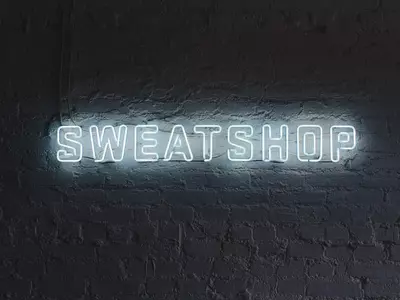
A sweatshop is a factory or workshop, especially in the clothing industry, where manual workers are employed at very low wages for long hours and under poor conditions.
Remember, guys, there is no such thing as a crochet machine. Unlike knitting, crochet is too complicated to replicate by machine. There are “Crochet machines” like Comez the try to mimic crochet & mass produce it on a huge scale. I wrote an article about it HERE.
The fast fashion industry produces inexpensive clothing to keep up with rapidly changing trends. Many brands in the fast fashion industry use cheap labor to produce clothes, which often leads to the exploitation of workers and horrible working conditions. Fast fashion companies tend to target workers in low-income areas who have limited alternatives for employment.
They do this because, people in low-income areas are more likely to tolerate the poor, exploitative labor conditions. Not only that but waste byproducts are contributing to water pollution and food chain disruptions, which disproportionately affect impoverished areas.
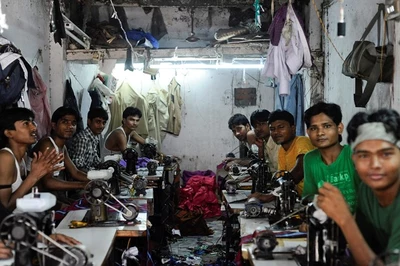
Fast fashion has been a huge problem within first-world countries since the 1990s. People purchase cheap trendy clothes but don’t want to spend a lot of money. However, the harmful sweatshops used to produce them also do not provide a living wage. You can obviously see the link between fast fashion and poverty.
The Indian textile and garment industry is the second-largest manufacturer and exporter in the world after China. Almost half of India’s textile & garments are exported to the United States and the European Union.
Unethical sweatshop practices
Due to the fact that many sweatshops reside in countries with inadequate labor laws and little government oversight, working conditions are dangerous and dehumanizing.
These sweatshops prey on the poorest people who do not have the luxury to turn down any form of work. In many manufacturing countries such as China, India, and Bangladesh, the minimum wage only ranges from a half to a fifth of the living wage required for a family to meet its basic needs. Furthermore, the average worker in an Indian sweatshop makes just 58 cents an hour, and in Bangladesh this drops to 33, linking fast fashion to the cycle of poverty.
According to a worker in New Delhi, “We are slaves to the Contractors. They give us less wages, but we have no alternative.”
Dangerous working conditions
Along with the miserable pay, working conditions in sweatshops are often incredibly dangerous. Garment workers have to work 14-16 hours a day, seven days a week, while facing verbal and physical abuse from overseers.
Employees often work with no ventilation while breathing in toxic substances. Accidents and injuries are also common; the 2013 Rana Plaza collapse in Bangladesh provides a grisly example. The collapse of the Rana Plaza factory caused over 1,000 garment workers to die on the job

Garment work is monotonous, tedious, and often performed in cramped, dark, & unventilated areas. This has led to many health issues amongst workers including:
- Loss of vision
- Chronic back pain
- Muscle pain and atrophy
- Headaches
- Pulmonary issues
- Cuts and infections
But the impact on health from child laborers is even worse. Researchers found that child labor exists almost entirely in the embroidery and embellishment stages of apparel making.
Child Labor
Siddharth Kara, from the University of Berkley conducted a research study & found cases of forced and bonded labor, as recruiters convinced parents in rural villages to send their daughters to spinning mills with promises of a decent salary, accommodations, meals, and opportunities for schooling.
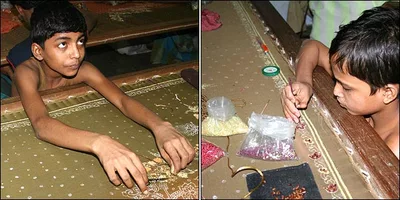
However, when the girls arrived at the mill they were forced to live in cramped hostels located on the factory grounds, were prohibited from leaving, and were not allowed to contact their families. In addition, working conditions were found to be mentally and physically abusive — the girls worked 60 or more hours each week, with mandatory unpaid overtime and night shifts.
The report also showed that workers rarely signed written contracts. Amongst all workers interviewed for the research, 60% were under 18 years old when employed by this spinning mill.
While these companies prey on the poor, they especially prey upon children in poverty. A report investigating mills in India found that 60% of the workers were under 18 when they began working. Trapped in the vicious cycle of poverty, these children are extremely susceptible to forced sweatshop labor. These unethical labor practices demonstrate how fast fashion and poverty are intermingled.
Environmental Issues
Not only do the low prices of these crochet items raise questions about their production, but it’s also important to consider what happens after the clothes have been bought. Cheap, fast fashion clothes aren’t made to last, and the low-quality means the clothes will likely start to fall apart after a few years. Even if the clothes last, it’s likely that thousands of these pieces will be thrown away after the trend passes and consumers grow bored of their crochet clothes, to join the 85% of textile waste that ends up in landfills.
Conclusion
If you want to participate in the crochet trend, it’s important to know who you’re giving your money, and whether you’re making an investment or will just discard your new clothes at the end of the season. Thinking mindfully about your clothing purchases means you are shopping smart, knowing that you’ll be wearing them for a long time. Better yet, know that you are not a part of a system that imprisons people in horrible living conditions. If you still think you’ll be rocking crochet in the years to come, some great small ethical brands can be found on Etsy or by your local Crochet guru.
Happy Crocheting!
Psst… If you love free crochet patterns (I know…duh) make sure to follow my blog on Facebook, Instagram, or Pinterest! Littlejohn’s Yarn posts original designs and free crochet pattern round-ups regularly for you to enjoy.

